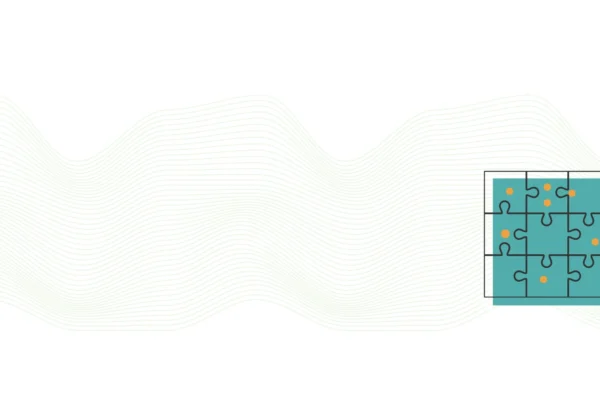IN THIS ARTICLE
AUGUST 2025
The challenges of scaling HR in a growing company
Growth is great… until it breaks your people systems. If you’re in HR at a mid-sized company that’s scaling fast, you’re likely being asked to deliver enterprise-level results with a team of two (or one). And no one’s slowing down to help you catch up. At around 50–150 employees, your existing talent processes start to splinter and the questions from leadership get harder:
- Why are our best people leaving?
- Who’s ready to step up and lead?
- Who should we develop?
You’re not just doing more. You’re being asked to do things you’ve never had to do before, like succession planning, performance frameworks, talent analytics – but without the systems, skills, or time to do them.
Welcome to the reality of scaling HR in a growing company.
What triggers the need for a better talent management solution?
HR leaders in growing companies don’t wake up one day and decide to “rethink their talent strategy.”
They get there because the business hits an inflection point where people systems no longer match the pace, scale, or ambition of the business.
And while the surface-level symptoms look different, underneath they share the same root cause:
1. Strategic misalignment becomes obvious
Big growth goals are set, but HR isn’t given the tools, data, or visibility to align people to them.
Strategic initiatives stall because the wrong roles are prioritised
Leadership sees “HR” as admin, not a growth driver
The talent strategy feels like it belongs to the business you used to be, not the one you’re becoming.
2. Data gaps start costing money
When promotions, hires, and development decisions are made on opinion instead of evidence, the mistakes add up.
The wrong person is promoted into a critical role
A high-potential is overlooked until they hand in their notice
A hire fails within months because role expectations weren’t clear.
3. Capability constraints hit breaking point
You’re being asked to deliver enterprise-level talent management with a handful of people.
There’s no central platform or consistent tools
Everyone is firefighting instead of building for the future
Projects stall because there’s simply no capacity to run them well.
4. A talent crisis turns people risk into business risk
These are the moments that cause late-night panic.
Your best performer leaves unexpectedly
A key leader resigns with no ready successor
Turnover spikes in a critical team
Skills gaps become painfully obvious in a big project or launch.
5. Inconsistent processes create uneven results
Different managers run performance reviews, succession conversations, and development planning in completely different ways – and not all of them well.
Goal setting is inconsistent or activity-focused, not outcome-driven
Development plans are generic or left undone
Talent reviews lack rigour and transparency.
6. Change meets resistance
Even when new processes or tools are introduced, they don’t stick.
Managers default to “the way we’ve always done it”
Employees don’t engage with systems they don’t see value in
Past failures make leaders wary of investing again.
7. Growth outpaces your people systems
This is one of the most common triggers.
You cross the 50–150 employee mark and informal processes collapse
You expand into new markets or add new product lines without a workforce plan
Scaling exposes every gap in performance management, succession, and development.
Recognise one (or several) of these?
These trigger points are different on the surface, but underneath is the same root cause: The business has scaled–but the people systems haven’t.
That’s when HR leaders look outside, usually in the form of new technology. Software feels like a quick win. It promises automation, dashboards, and manager self-service. But software alone rarely fixes the problem without the right tools and a team to implement and embed them.
What are your available solutions to scale HR?
In the talent management space, we have three broad competitors:
Tech-First Providers
Software vendors with configurable platforms and workflows.
What you get: Scalable systems to collect and manage people data.
Limitations: The platform is only as good as the process it’s built on. Most still rely on outdated HR thinking.
The result: You end up customising a system to fit broken processes, then replacing it when it fails to deliver.
Tool-First Providers
Software vendors and consultants with psychometric tools and frameworks.
What you get: Well-structured insights, reports and advice.
Limitations: They leave you to figure out how to implement it without the resources or know-how to bring it all together.
The result: You get a good recipe, but when the cake flops, it’s on you.
Team-First Providers
Change managers, comms teams or contractors.
What you get: A capable team to manage delivery, timelines, and communication.
Limitations: They’re not talent experts. They implement what they’re given, even if the strategy is flawed.
The result: The project lands, but the solution doesn’t deliver.
Why tech alone won’t fix your people problems
After 25 years in this space, we looked back at all our implementations, especially the ones that didn’t land the way they should have. The systems were solid. The logic was sound. So why didn’t they stick?
Here’s what we found:
- Without the right tools and processes, we got poor people data.
- Without effective project and change management, our solutions were delayed or never fully adopted.
💡 The realisation: This isn’t a software problem. What businesses really need isn’t just a piece of tech or an isolated solution. They need something far more integrated.
That’s when we moved away from product thinking — and built what we now call Talent Management as a Service (TMaaS).
What TMaaS actually is and what you get
Talent Management as a Service (TMaaS) is a scalable talent infrastructure delivered as a service.
You get the strategy, tools, tech and support needed to build the people systems that unlock business growth, without hiring a full-time team or stitching together multiple platforms.
At the core, we help you implement seven connected talent systems:
| What We Build With You | What It Solves |
|---|---|
| A clear, executed talent strategy | Aligns your people plan to business goals and prioritises high-risk areas |
| Role-by-role talent assessments | Identifies skills gaps and strengths across teams and roles |
| High-value talent identification | Distinguishes high performers, high potentials and future leaders |
| Performance planning and goal alignment | Connects individual goals and actions to business strategy |
| Succession and readiness mapping | Provides a clear view of successors, readiness and development needs |
| Development planning by role | Targets future skills and ties learning to ROI |
| Retention risk mapping and strategy | Proactively retains critical people in critical roles |
The true cost of implementing a talent strategy alone
If you were to build the full capability in-house, hiring the specialists, buying the software, acquiring the infrastructure, and integrating the tools to deliver all seven talent practices, here’s what it would take each year.
| Capability | Skills You’d Need to Hire | Annual Cost (DIY) |
|---|---|---|
| People Process Design & Refinement |
| $50,000 – $100,000 |
| IT Infrastructure & Application Management |
| $75,000 – $150,000 |
| Data Design & Management |
| $60,000 – $120,000 |
| Data Analysis & Visualisation |
| $50,000 – $100,000 |
| Project Management & Implementation |
| $80,000 – $140,000 |
| Change Management & Training |
| $50,000 – $100,000 |
| Total Cost of Ownership for Technology & Skills (per annum) Includes infrastructure, software licenses & certifications. | $635,000+ | |
| TMaaS for a Company of ~150 (per annum) | $50,000 – $75,000 | |
| TMaaS as % of Total Cost of Ownership | 9.4% – 10% | |
That’s the reality of going it alone: multiple hires, multiple vendors, and hundreds of thousands in annual costs, not to mention the time and risk of getting it all to work together.
TMaaS delivers the same breadth of capability: tools, technology and team for just 9–10% of that cost. And because it’s fully delivered, you get impact in weeks, not years.
TMaaS is more than a system. It’s a fully-enabled solution
What makes TMaaS different is that we don’t just hand you a framework, software, or a report and leave you to figure it out.
We bring the tools, the technology and the people needed to implement, embed and scale these seven talent practices inside your business.
That means:
The systems are customised to your structure and goals.
The rollout is managed with hands-on support and change management.
And the results are visible in decisions, development, performance and business outcomes.
Talent Management as a Service was built for growing companies. Backed by decades of implementation experience. We’re ready when you are.
What to read next
If you’re exploring talent solutions, here’s where to go from here:
- TMaaS: A Guide for Overloaded HR Leaders → Explains how TMaaS works and why it’s built for businesses like yours
Or skip the reading, and book a 20-minute call with us to talk through where you’re stuck. No pressure. Just clarity.
Our talent review solution helped this client save 10, 000 hours per annum
- Eliminate Excel-based processes with a self-directed employee assessment and development tool
- Provides 360-degree feedback, performance management and personalised development plans
- Accurately identify the right talent for every role.







